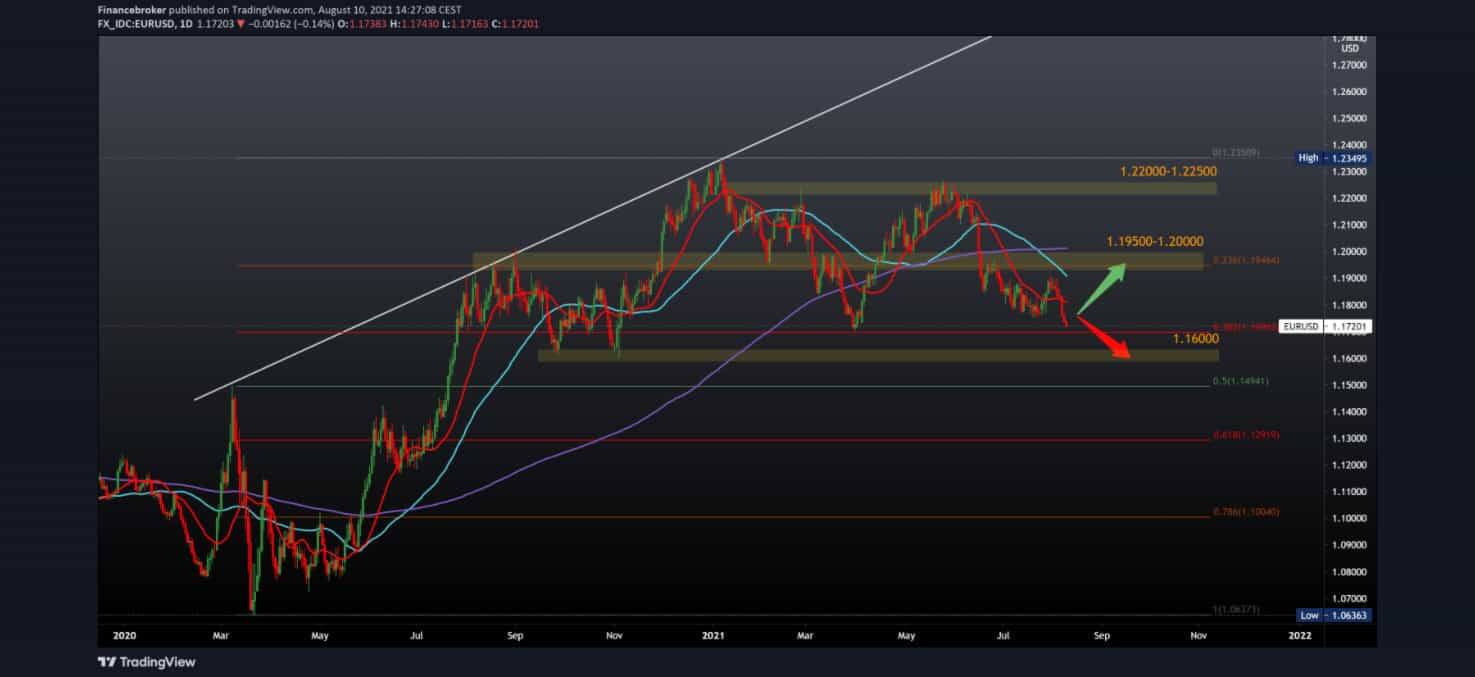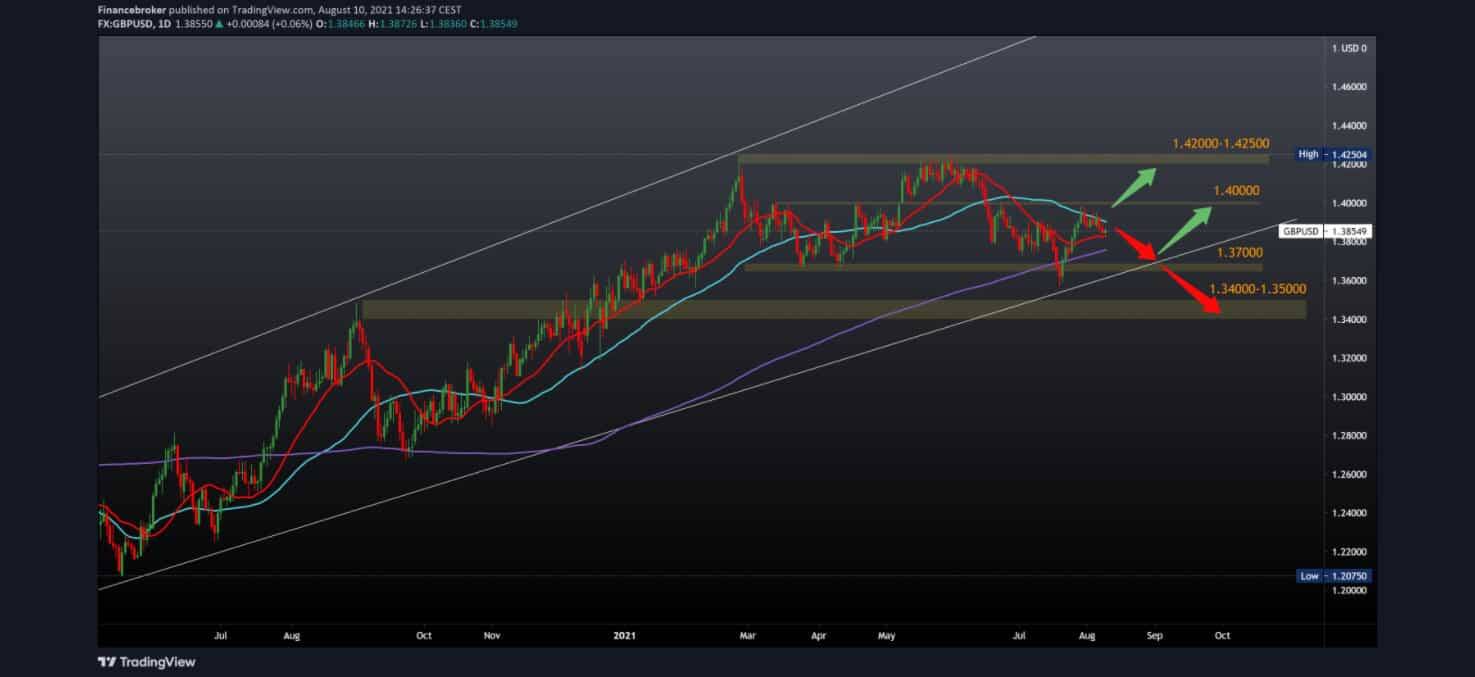
EURUSD, GBPUSD and Weak European Economic Data
EURUSD chart analysis
The euro is still under a lot of pressure because looking at the chart on the daily time frame, and we see that we have now fallen below the previous consolidation and potential support and that we are now moving to test the previous low from April and 38.2% Fibonacci level at 1.16963. If the pair slips below that support, the next one awaits us in the zone around 1.16000 where we were last year in October and November. Our technical bearish target is 50.0% Fibonacci level at 1.14950 or psychological level at 1.15000. All moving averages are on the bearish side, ranging from a 20-day moving average to a 200-day moving average.
For the bullish scenario, we now need positive consolidation at this level, returning above the 20-day moving average, for the pair to be able to make some momentum for the new bullish direction. After that, our targets are a 50-day moving average at 1.19000 and a 23.6% Fibonacci level at 1.19500. And for a definite transformation and transition to a bullish trend, we need a break above the 200-day moving average.

GBPUSD chart analysis
The pound absorbs the dollar’s strength better. For now, the pair is in a slight pull but not as strong a bearish momentum as EURUSD. GBPUSD currently has support in the 20-day moving average and 200-day moving average, while our 50-day moving average is resistant from the top. We definitely need a break above MA50 and resistance at 1.40000 psychological level to continue the bullish trend. If the pound manages to overcome that, we move to the zone of previous highs at 1.42500. Otherwise, if the pound collapses as well as the euro, it can be found down again on testing the 200-day moving average and the lower support line of this big channel. The break below would open the door to revisit the previous low at 1.36000 and perhaps lower towards 1.34000-1.35000.

Market overview
German economic confidence deteriorated more than expected to a ten-month low in August, data from the ZEV-Leibniz Center for European Economic Research showed on Tuesday. ZEV’s economic sentiment indicator for Germany fell to 40.4 from 63.3 in July. The score was expected to fall moderately to 56.7. With the third consecutive drop in the index, the reading reached its lowest level since November 2020.
Meanwhile, the assessment of the economic situation in August advanced by 7.4 points to 29.3 points. But that was slightly below the economists’ forecast of 30.0. The third consecutive drop in expectations indicates an increase in risk for the German economy, such as a possible fourth wave of COVID-19 starting in the fall or a slowdown in growth in China. “A clear improvement in the assessment of the economic situation, which has been going on for months, shows that expectations are also weak due to the already achieved higher growth,” Wambach added.
Financial market experts’ sentiment about the eurozone’s economic development has also weakened for the third time in a row. The corresponding index fell by 18.5 points to 42.7 points in August. In contrast, the indicator of the current economic situation rose by 8.6 to 14.6 points in August. Further, the research showed that inflation expectations for the eurozone fell by 27.4 points in parallel with the fall in economic expectations. The inflation rate is currently 42.2 points.
-
Support
-
Platform
-
Spread
-
Trading Instrument




